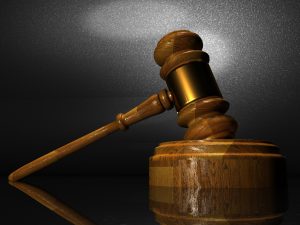An insurance agent’s bad faith may be imputed to the insurance company and thus become the company’s bad faith. However, under Georgia law, the potential liability of an insurance broker or agent (separate from the potential liability of the insurer itself) is limited to the terms of the insurance policy it negligently failed to procure. An agent who negligently fails to procure the requested coverage is liable for loss or damage to the limit of the agreed policy.
J. Smith Lanier & Company v. Southeastern Forge, Inc.
In J. Smith Lanier & Company v. Southeastern Forge, Inc., the Georgia Supreme Court clarified that an agent or broker who negligently fails to procure a policy is not necessarily subject to the same law as an insurer who refuses to pay a claim in bad faith. Southeastern Forge was a client of the independent insurance broker J. Smith Lanier (“Lanier”). In 1998, Lanier prepared Southeastern’s application for primary and excess general liability coverage, but negligently failed to list an event on the application when it was submitted to the excess insurer. After an agricultural blade manufactured by Southeastern Forge malfunctioned and injured a worker in Texas, the excess insurer sought a declaratory judgment that the policy was void ab initio for the failure to list the event on the application. Southeastern Forge then filed suit against Lanier, asserting negligence, breach of fiduciary duty, and breach of contract to recover the funds expended in the Texas suit. The trial court held that Southeastern Forge could not obtain more than the $2 million policy limits. The Georgia Supreme Court agreed, noting that under the facts of that case the law did not impose “the unique statutory duties of insurers on independent brokers who do not issue contracts of insurance and have no duty or ability to evaluate and compromise claims.”
 In some cases, insurers will pressure you to settle your claim as quickly as possible. Unfortunately, these quick cash settlements are lowball offers for far less than what your claim is worth – the primary purpose is to limit the amount of money the insurance company will have to pay on your claim. By accepting the offer, you could find yourself with uncovered medical expenses and other losses that you will need to pay out of pocket. If you stand your ground and build your case, however, you can often get the insurance company to make a fair settlement of your claim.
In some cases, insurers will pressure you to settle your claim as quickly as possible. Unfortunately, these quick cash settlements are lowball offers for far less than what your claim is worth – the primary purpose is to limit the amount of money the insurance company will have to pay on your claim. By accepting the offer, you could find yourself with uncovered medical expenses and other losses that you will need to pay out of pocket. If you stand your ground and build your case, however, you can often get the insurance company to make a fair settlement of your claim.  Georgia Injury Lawyers Blog
Georgia Injury Lawyers Blog


 We typically represent people who have been injured as a result of someone else’s negligence. However, we also represent people who may be responsible for those accidents in certain situations (and assuming that we don’t already represent the plaintiff). One of those situations is when your insurance company is refusing to stand by the terms of your insurance policy.
We typically represent people who have been injured as a result of someone else’s negligence. However, we also represent people who may be responsible for those accidents in certain situations (and assuming that we don’t already represent the plaintiff). One of those situations is when your insurance company is refusing to stand by the terms of your insurance policy. A recent
A recent  If you get injured in an accident, there are multiple issues to consider. First, you need to figure out who is at fault. Then you need to determine how much compensation you are entitled to receive. Finally, you need to navigate the process for actually getting your claim paid. In most accident cases, someone’s insurance company pays the claim – the at-fault person doesn’t often pay for your injuries out of his or her pocket.
If you get injured in an accident, there are multiple issues to consider. First, you need to figure out who is at fault. Then you need to determine how much compensation you are entitled to receive. Finally, you need to navigate the process for actually getting your claim paid. In most accident cases, someone’s insurance company pays the claim – the at-fault person doesn’t often pay for your injuries out of his or her pocket.